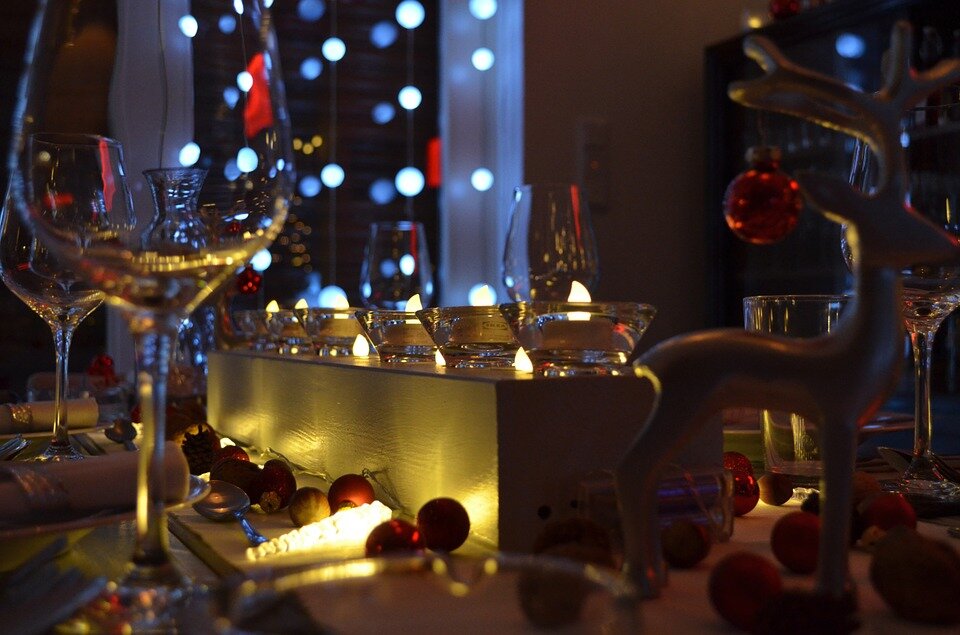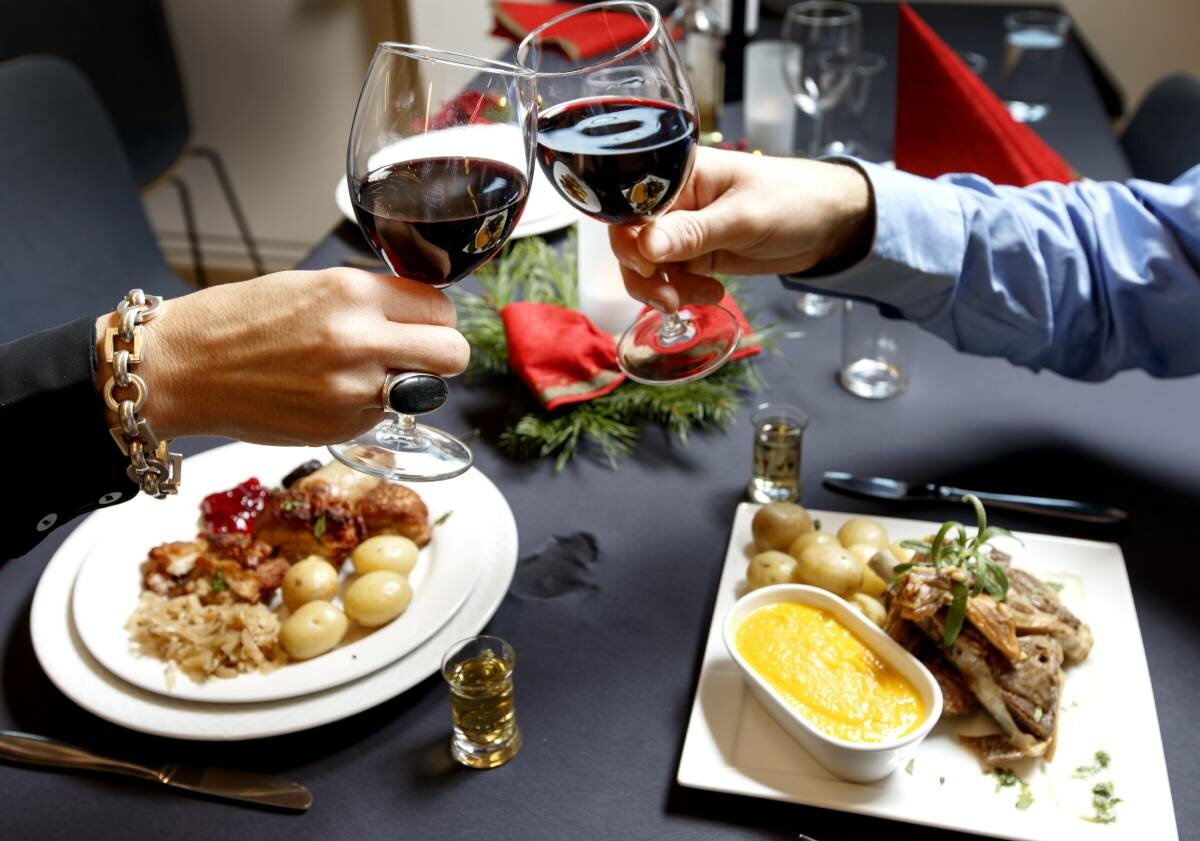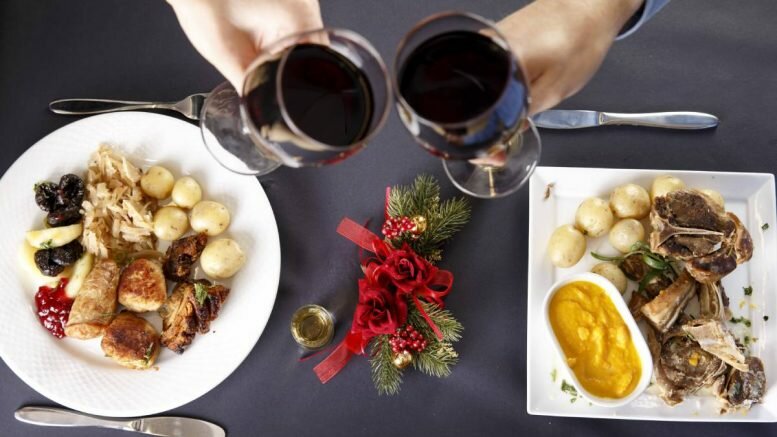When the end of the year approaches, and the days became shorter and darker, that means only one thing in Norway: Julebord season! More than just a Christmas dinner with friends, family or colleagues, the ‘Julebord’ is an intrinsic and much loved part of Norwegian festive culture. Despite the current COVID-19 pandemic somewhat dampening the festive mood, this is one tradition that almost nothing can stop.
Introducing Jul: A very Norwegian Christmas
Norway has a rich cultural tradition when it comes to Christmas. It is a blend of Northern European traditions but with its own distinct flavor. Norway, like the rest of Scandinavia, celebrates ‘Jul’. This is made up of five distinct phases: Advent, Julaften, Romjul, Nyttår, and Epiphany. However, for most Norwegians, ‘July’ refers to the time between Christmas Eve and New Year’s Day. Christmas – which is celebrated in many English-speaking countries on December 25 – is celebrated on December 24 (Julaften – literally Christmas Night) in Norway. It’s a time when many families come together for a night of celebration, feasting, and present giving.
Aside from families coming together, the festive season is a time when companies, organizations and even friendship groups come together for that most Norwegian of Christmas traditions: the Julebord.
A celebration in the dark of winter
One of the ways that many Norwegians survive the long, cold, and dark winters is to come together and celebrate the Christmas season. Traditionally starting on the first Sunday of Advent (towards the end of November), it is a major time of festive spirit and celebration throughout the country.
Yet, for many Norwegians, the Christmas season can start as early as mid-October because that is the date from when many firms, companies, and organizations start to hold their annual ‘Julebord’. This is an annual Christmas party where food, drink (often too much), and fun times are had by all, from the C.E.Os to the clerks.
Regardless of whether you are religious, the ‘Julebord’ season can cap off the end of a working year. Companies and organizations often hold it as a way of giving thanks for the hard work of their employees throughout the year.

A key team building exercise to foster community spirit
For many organizations, companies, and businesses in Norway, the ‘Julebord’ is a significant part of fostering a community spirit among employees. From the end of October onwards, many restaurants and bars are packed with companies celebrating. Often the ‘Julebord’ consists of the employer paying for dinner and beverages (though not always alcoholic beverages) for all employees. This is seen as a token of appreciation for the employees’ hard work throughout the year.
Though Norway possesses an often low power hierarchy within organizations, the party is still an important factor in bosses mingling with their underlings and vice versa. Sharing a dinner, or a drink, helps to break down social and work-related barriers and can help foster feelings of togetherness, community, and solidarity within a company potentially leading to increased work-related performance. The ‘Julebord’ is a key part of turning employees into ‘family members’.

What’s on the menu?
Recent years have seen many ‘Julebords’ become more socially and environmentally conscious.
Yet the most popular ‘Julebord’ food tradition includes going to a restaurant to eat traditional Norwegian Christmas food. First and foremost, akevitt (a spiced potato-based liquor) will be consumed as an aperitif, with the dinner itself, and as a digestive after dinner. Dinner mainly consists of one of the following: Lutefisk (dried cod pickled in lye served with green peas and boiled potatoes), Ribbe (slow-roasted pork belly accompanied with lingonberry jam, sausages, and stewed cabbage) or Pinnekjøtt (salted mutton rib served with mashed root vegetables and broth).
All the salty food is best washed down with Juleøl (a dark and spicier beer with a higher alcohol content… Which helps soak up all the fat and salt!), copious amounts of wine, or any sort of alcoholic coffee-based drink. The ‘Irish Coffee’ cocktail is a sort of unofficial Norwegian national drink in the winter months.
Enjoy and celebrate – but not too hard
So, this festive season, you will no doubt see many people out feasting, dining, and celebrating that marvelous and most Norwegian tradition of an annual ‘Julebord’. However, it is worth noting that the people who you are dining with are your fellow employees and bosses. What happens during a ‘Julebord’, regardless of how many akevitts one has consumed, doesn’t erase itself the following day. So, this ‘Julebord’ season, relax, enjoy but remember that everything is best enjoyed in moderation. No one likes a bad drunk, especially not your employer!
God Jul!
Source: #NorwayTodayTravel
Do you have a news tip for Norway Today? We want to hear it. Get in touch at [email protected]




Be the first to comment on "Julebord: What is Norway’s famous Christmas celebration?"